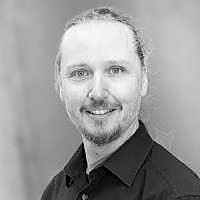Agile methods: The truth lies on the pitch!
In a dynamic business world, rigid hierarchies can be an obstacle. Agile methods show alternatives.

“Self-organized teams” sound like anarchy and chaos, but the opposite is true: agile methods like Scrum give this idea a clear framework with defined processes. And this is not only ideal for teams of developers, even if these concepts originally stemmed from this field. Many other industries, companies and departments can benefit from this.
What agility has to do with soccer
A team sport like soccer can serve as an example of some basic ideas: although there is a coach here as well as club managers, just as there are supervisors and managers in a company, on the pitch, the players themselves are responsible for scoring goals and meeting targets. Siegfried Kaltenecker draws this comparison in his book “Selbstorganisierte Teams führen” (Leading Self-organized Teams) (dpunkt publishing). Kaltenecker also points out that the coach still plays an important role: he determines such essential parameters as the team composition, the basic game plan, the tactics or the training program. Even during the game he is not completely powerless: he can bring on or take off players, talk to individual players and use the half-time break to change tactics.
Like any comparison, this one should not be taken too far. Because a company does not normally have such a clearly defined playing field as in soccer. And unlike in sports, the rules can change in the middle of a match. But it can be used to explain some basic principles of self-organized teams effectively.
Levels of self-organization
In the corporate world, the topic of self-organization is not only black and white, but different shades. The American team expert J. Richard Hackman defined this as follows:
- Manager-led teams: Team members only have authority over how they perform the tasks, while management sets goals and framework conditions and controls work processes and progress.
- Self-managing teams: The members are responsible for the performance of the tasks and they control the process themselves.
- Self-forming teams: These also determine their own composition and other essential framework conditions.
- Autonomous teams: These are responsible for all functional areas themselves.
Kaltenecker also points out that self-organized teams “do not emerge overnight” and they do not have the same status forever: “Teams have to reposition themselves repeatedly in response to changing requirements. They have to react quickly to changing contexts and prove their agility on an ongoing basis.”
Routines, rituals and redundancies
In addition, as already indicated at the beginning, there are clear guidelines for all processes. For example, Scrum relies on short, manageable sections (“sprints”) and regular communication on the state of affairs (“daily scrum”). The team records all tasks in a “backlog”.
The optimum group size is five to nine people, to move a topic forward in a concentrated and focused manner, says Valentin Nowotny, author of “Agile Unternehmen” (Agile Companies) (Business Village): “If there are more than ten team members, each team will break up into subgroups; if there are four or fewer, it will be difficult if individual team members are absent.”
According to Nowotny, methods like Scrum assume that people make mistakes or problems occur. That is why there are routines, rituals and deliberate redundancies. “Kanban, Scrum, Design Thinking and Lean Startup are precisely such systems that do not assume that people are perfect, but that they are capable of learning if the appropriate learning environments are provided in a business context,” says Valentin Nowotny. In contrast to the classic project, however, agile teams strive to constantly improve their own performance. The basis for this is “personnel continuity and consistent self-monitoring.”
The bottom line
In his book, Siegfried Kaltenecker also lists many examples of companies that use methods such as Scrum or Kanban only in name. They cannot completely let go of old hierarchies and processes. “In my experience, autonomy is also a question of training and gradual change,” he writes. In the end, patience and courage are called for.
The DMEXCO exhibitor e-velopment GmbH, for example, works in SCRUM teams. Come and have a look in Hall 7 on 12 or 13 September.
You can also find out more about agile project management at Pixelpark Bielefeld GmbH in Hall 8.





